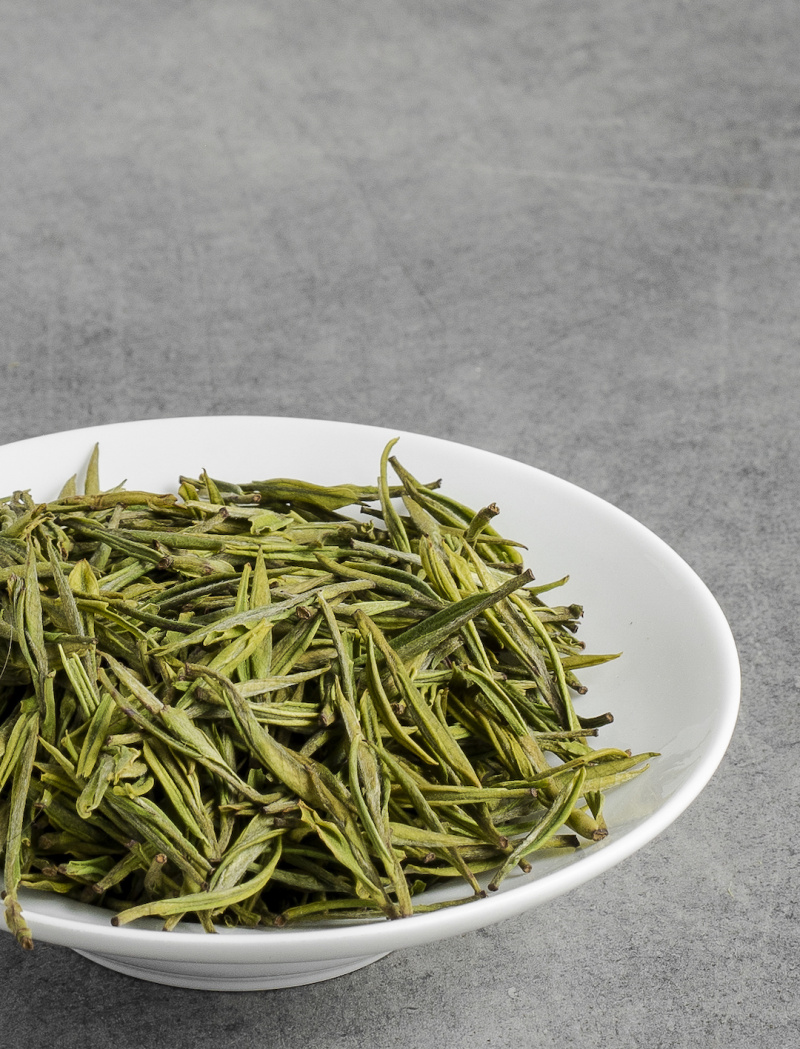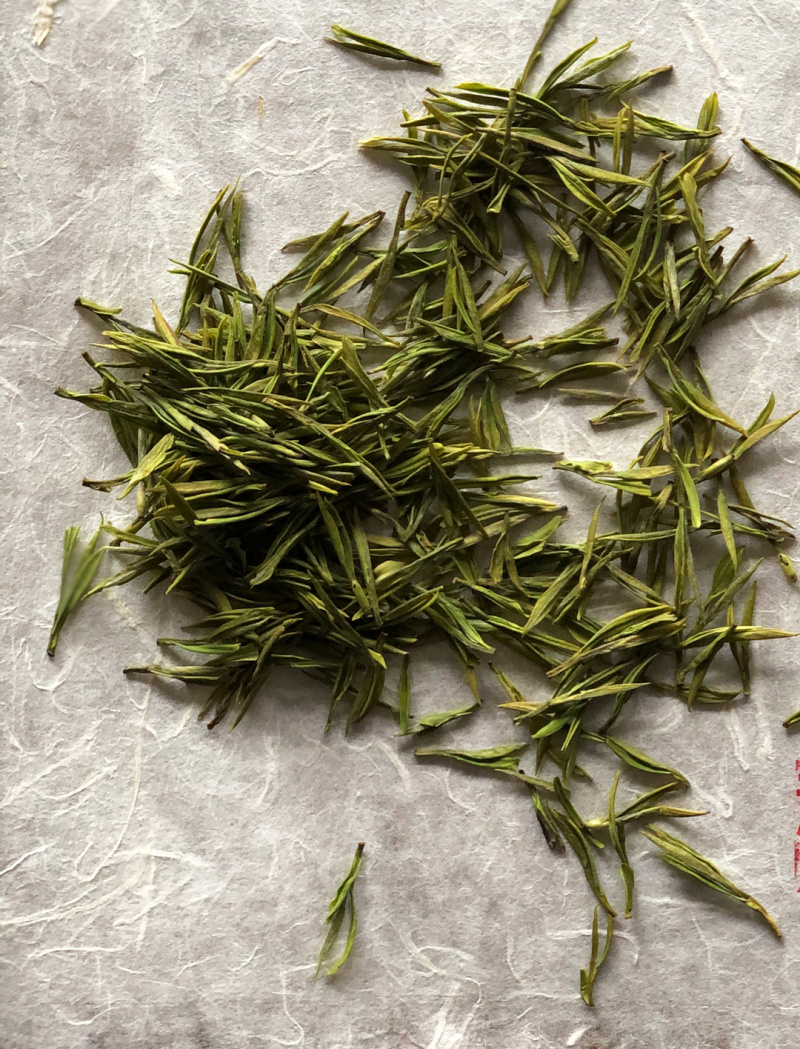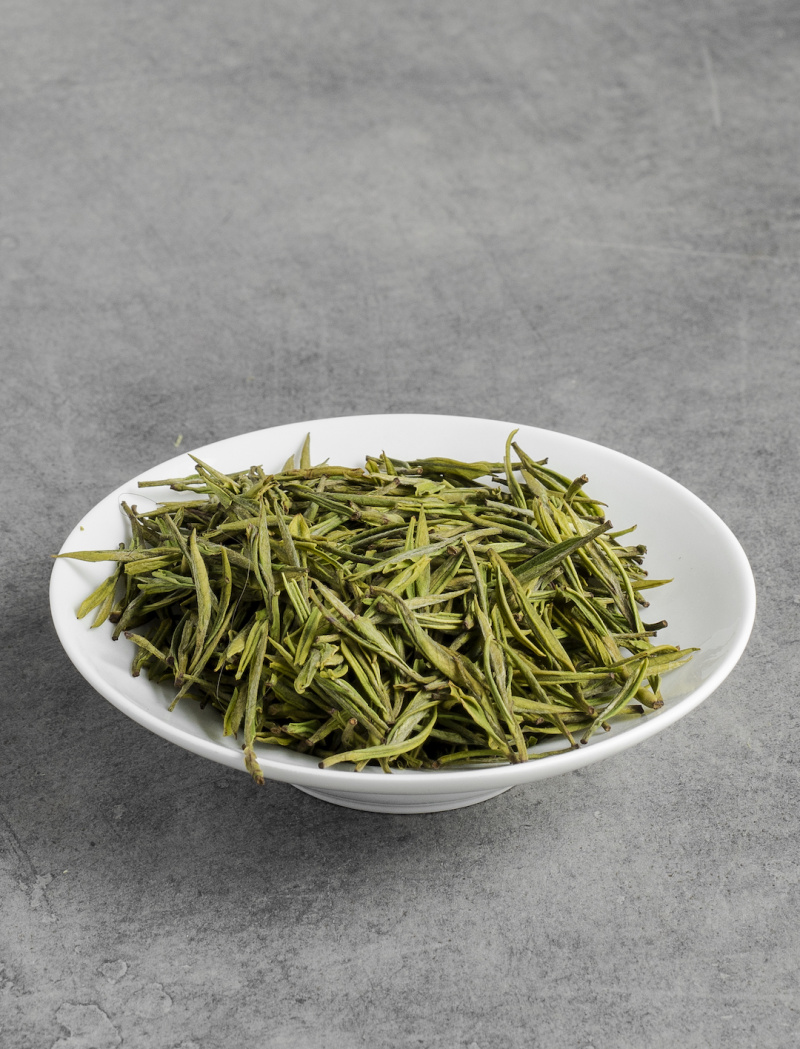Anji Baicha Early Spring 2021 No.346s
ethereally elegant, fresh green tea, one bud one leaf
very early spring harvest
a special cultivar with light yellow buds and leaves
the name literally translates as Anji White tea 安吉白茶
Date of harvest: The very first picking, 20th of March 2021, Pre Qing Ming, 清明前茶
Varietal:
Bai Ye Yi Hao 白叶一号 White leaf No.1
Region:
Anji, Zhejiang province, China
Description
This rare varietal 白茶一号 is called white tea because the very first flushes of the tea, the tender buds are quite white. Later on the leaves develop a darker green-yellowish color. Due to the early harvest, the tea is very high in L-theanin, which is responsible for the calming, uplifting ethereal effect. Anji Bai Cha said to contain 3 to 4 times more amino acids than green tea. It also contains less polyphenol, so the taste is less bitter and astringent compared to other teas.
Enthusiastic about the success of Anji Baicha, introduced last year, this year we also ordered a smaller batch from the very first harvest. We were interested, what makes a tea valued at a higher price, what makes it worth more. The main difference between the two batches is the date of picking. Anji Baicha Early Spring 2021 was picked eight days earlier with very small, beautiful buds.
Tasting the two teas together, it feels that the later one is tastier, more intense in flavour, while the early harvest is more restrained in everything, on the other hand much more ethereal, more sophisticated.
There is also a big difference in the size of the buds. The early leaves are shorter, compact, still at the beginning of their growth, the leaves harvested later are longer, thinner.
The story:
In the Song Dynasty period emperor Hui Zhong wrote a book on tea, called Treatise on Tea 大觀茶論. He was a great tea master, admired tea ceremony. He claimed in his book that one of his very favorite tea was Anji Baicha.
When reviving the Anji tea tradition in the end of 1990’s, researchers have found a few original Baicha tea trees around 300 years of age. These were the starting point of the new plantations, they made cuttings from these old trees. Our grower proudly claims that his tea bushes originate from the first cuttings of the trees, as later only cuttings from the new bushes were allowed.
“Today I will tell you the story of Anji white tea. As early as around 2000, Anji was still in poverty. At that time, some foresighted villagers pruned the first generation of Anji white tea on the mother tree of Anji white tea, and started to grow it to make tea. At that time, it was very difficult to do. There was no money, and the Anji white tea market was not so good. But the people who persevered won. My uncle is one of them. Since 2008, he often wins prizes at the local tea competition. This is half of the credit, also because the tea trees in his tea garden are the first generation of cuttings of the mother tree! Later, after the Anji white tea was gradually accepted by the market, the later-conscious people started cutting. Many of the Anji white tea you buy on the market may be the fifth and sixth generation cuttings. . . That tea is made to bring a baby’s taste, you can imagine. So you are lucky to meet me. We have to get Anji white tea as the first generation of cuttings in the mother tree, 18 years old!” An introduction from our tea grower.
Tasting notes:
Very delicate flavour and taste, with etherial lightness.
Preparing Instructions:
Quantity: 6-7 gramm per 180ml
Water temperature: 75ºC. From fresh, cold spring water or filtered water
Brewing time: 10-15…seconds
Infusions: 5-6






